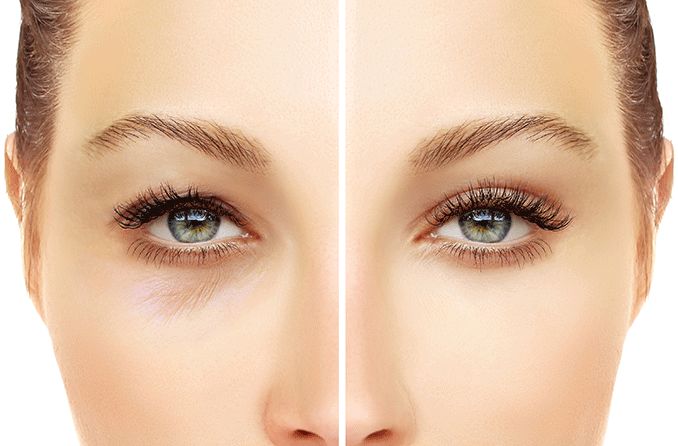While eye color change surgery does exist in the form of controversial laser and implant procedures, eye care experts say the safest way to change your eye color, at least temporarily, is with professionally fitted colored contact lenses.
Citing the potential dangers of eye color change surgery, the American Academy of Ophthalmology advises someone who wants to temporarily change their eye color from, say, brown to blue should see whether colored contact lenses might be appropriate. The organization points out that these lenses should be worn only if they’re prescribed, dispensed and fitted by a qualified eye care professional. These cosmetic lenses can be worn even if you don’t need vision correction.
READ MORE: How do I choose the best contact lens color?
Laser surgery for eye color change
In the United States, a company called STRŌMA Medical Corp. is testing a laser procedure that it says can change someone’s eye color from brown to hazel, lighter brown, gray, blue or green. STRŌMA says patients who have been treated in clinical trials usually achieve the desired color change after three or four treatments. The effects appear to be permanent, the company says.
So far, the noninvasive STRŌMA procedure isn’t publicly available anywhere in the world. The U.S. Food and Drug Administration (FDA) would need to approve the procedure before it’s widely performed in the United States.
STRŌMA says it will seek approval for the procedure in other countries before pursuing FDA approval in the United States. The company’s clinical trials are designed to gauge the safety and effectiveness of the procedure.
Laser eye color change surgery cost
According to STRŌMA, ophthalmologists that are licensed to perform the procedure will set their own prices. STRŌMA estimates that for U.S. patients, three or four laser treatments would cost a total of $5,500 to $6,000.
How laser eye color surgery works
The STRŌMA procedure uses a low-energy laser beam that passes through the clear cornea of the eye and slightly heats the brown pigment on the front surface of the iris, the colored part of the eye. This heating starts a process that removes the brown pigment and reveals the underlying blue or green eye.
Because of how the eye is structured, a patient can’t choose the desired eye color. However, STRŌMA says it can accurately predict what the underlying color will be.
“Once the pigment is removed, the underlying color appears gray-blue or gray-green, which is preferred by most patients because it reflects more light and creates a more striking appearance,” the company says. “If the patient wants a deeper shade of blue or green, a special saturation treatment can be performed.”
Risks of laser eye color change surgery
STRŌMA warns that some patients have undergone “black market” laser procedures for eye color change in Argentina, Mexico, Spain, Turkey and other countries. These unapproved, unregulated, potentially harmful procedures rely on lasers meant for other purposes, the company says.
Just as worrisome to the American Academy of Ophthalmology are potential side effects from STRŌMA’s laser procedure. Possible risks include glaucoma, which can cause vision loss or blindness, and an inflammation of the eye known as uveitis, the academy says.
In 2019, Dr. Marguerite McDonald, a board-certified ophthalmologist in New York who is a consultant for STRŌMA, wrote that 10 years of data from animal tests and six years of data from human tests had “demonstrated the safety and effectiveness” of STRŌMA’s laser procedure.
Dr. Saj Khan, an ophthalmologist in the United Kingdom, told CNN in 2015 that the STRŌMA treatment raised some red flags.
“The main concern with any procedure that involves releasing pigment inside the eye is that the pigment can clog up the normal drainage channels, which can in turn cause the pressure inside the eye to go up,” Khan said. “If that happens significantly enough, for long enough, it’s how patients develop glaucoma.”
RELATED READING: Are eye tattoos safe?
Implant surgery for eye color change
In addition to expressing concern about laser eye color change procedures, the American Academy of Ophthalmology warns about eye color change surgery involving iris implants. One estimate puts the cost of this eye color change procedure at $5,000 to $7,000; another estimate indicates the cost ranges from $6,000 to $10,000.
During iris implant surgery, an artificial iris made of silicone is folded and inserted into a slit that has been cut into the cornea, the ophthalmologists’ group says. The iris then is unfolded and adjusted to cover the natural iris.
Risks of iris implant surgery
The ophthalmologists’ group says iris implant surgery for cosmetic purposes may lead to serious eye damage, vision loss or blindness. The procedure isn’t approved in the United States, but it is performed in countries like China, Costa Rica, India, Mexico and Tunisia.
A research article published in 2018 reported that a 30-year-old man had suffered progressive vision loss after getting his eye color changed through iris implants. The vision loss stemmed from glaucoma and corneal edema (swelling). This case highlights the dangers of cosmetic iris implants and their “challenging” complications.
Other cases of damage have been documented.
For instance, a research report published in 2012 found that among 14 eyes that had undergone cosmetic iris implant surgery, serious vision problems were detected in 36% to 64% of them. These problems included glaucoma and uveitis. In 2017, an ophthalmology researcher in India went so far as to call for a ban on cosmetic iris implants, citing a 29-year-old patient whose vision had seriously deteriorated following implant surgery.
“Anyone who is considering this surgery should ask themselves this: What is more important — my eye color or my eyesight?” Dr. James Tsai, an ophthalmologist in New York, says on the group’s website. “The color change is not the only thing that’s permanent about this procedure; it could very well damage your vision for life.”
Iris implant surgery originated as a way to correct problems with the iris. But the popularity of this eye color change surgery for cosmetic reasons continues to rise, despite the documented risks.
More cosmetic eye health articles
Canthoplasty surgery for a larger, almond-shaped eye
Lash extensions: Pros, cons and helpful tips
Eyelid surgery: What it is, how much it costs, what the risks are








